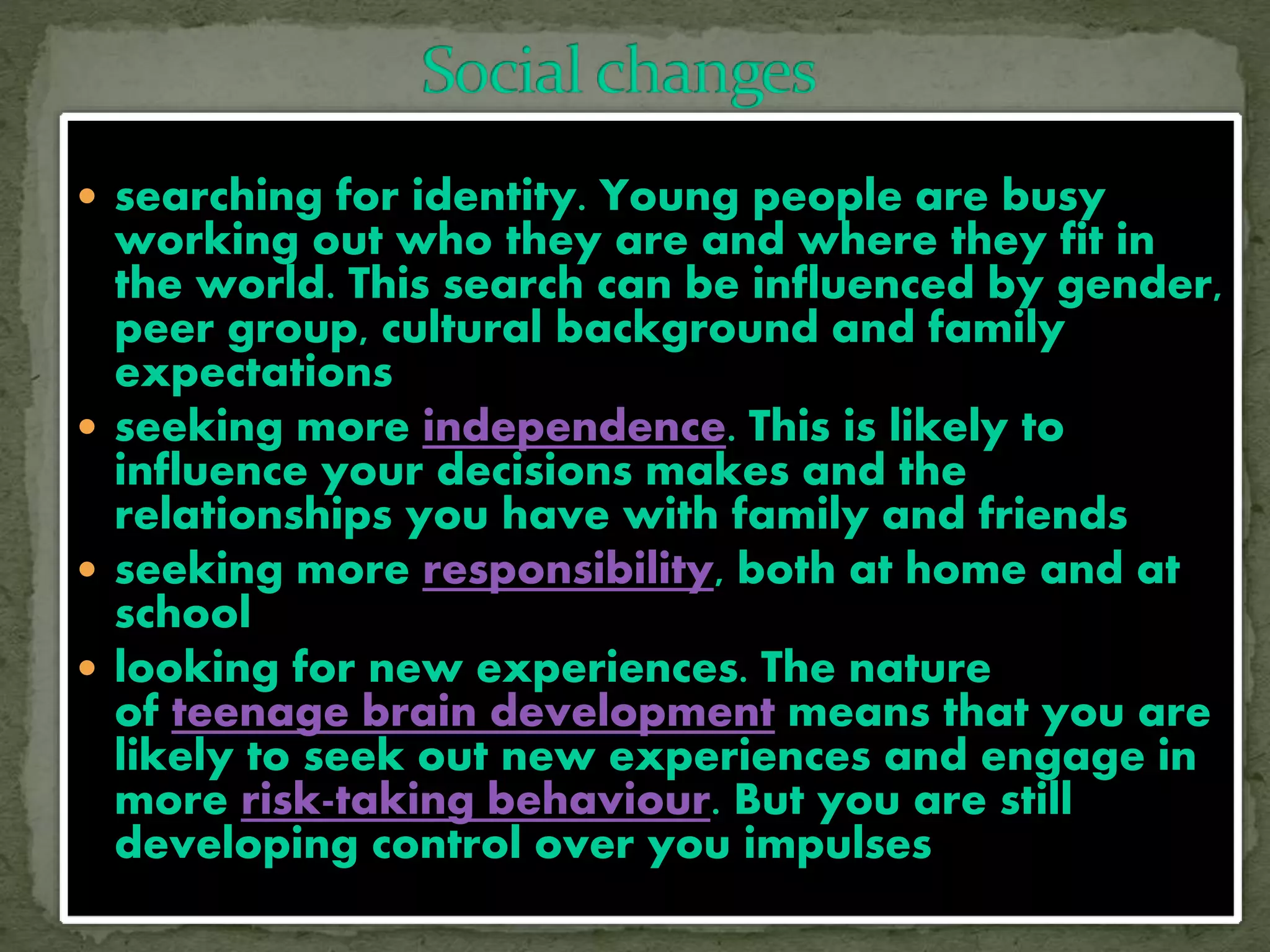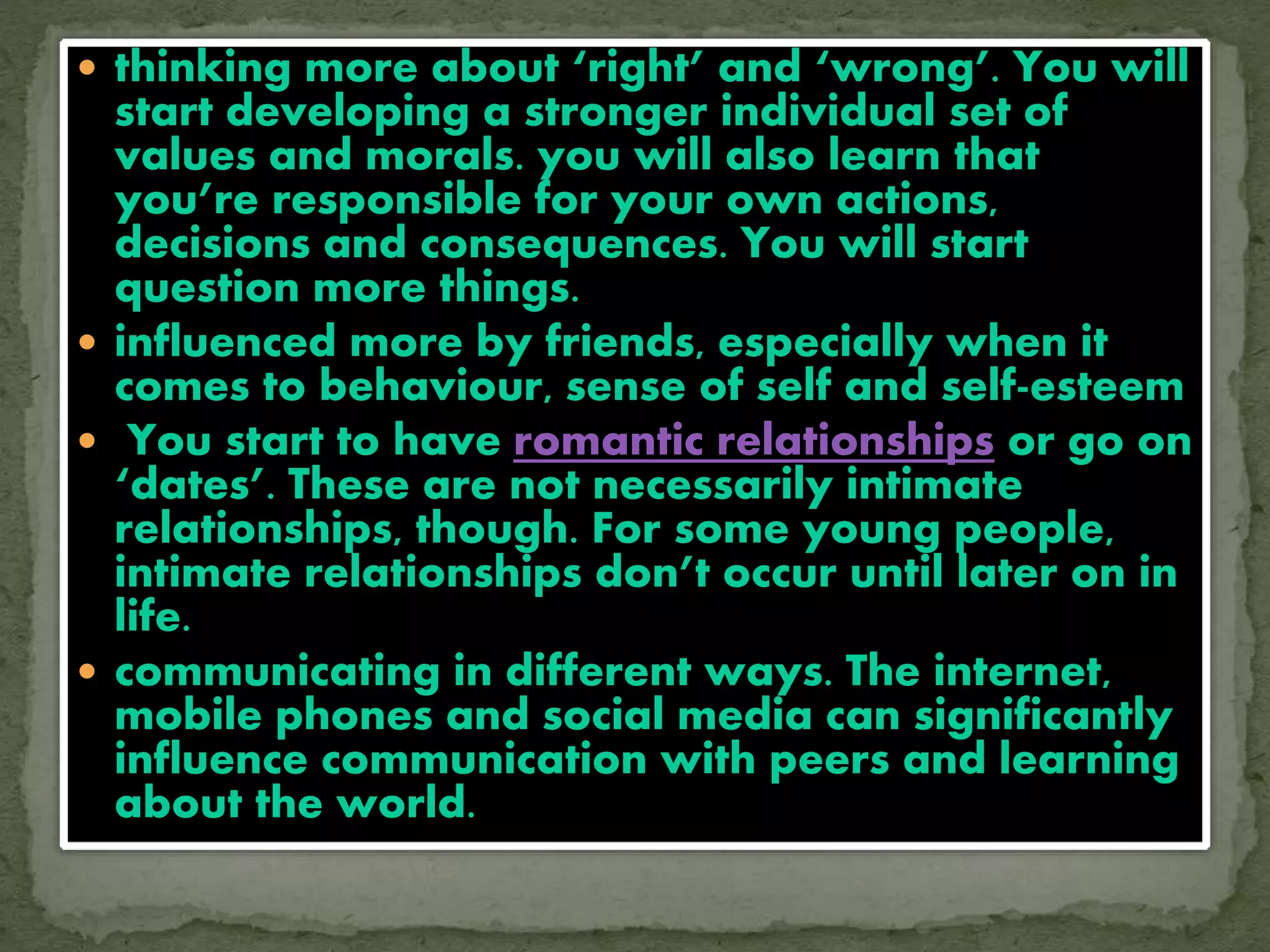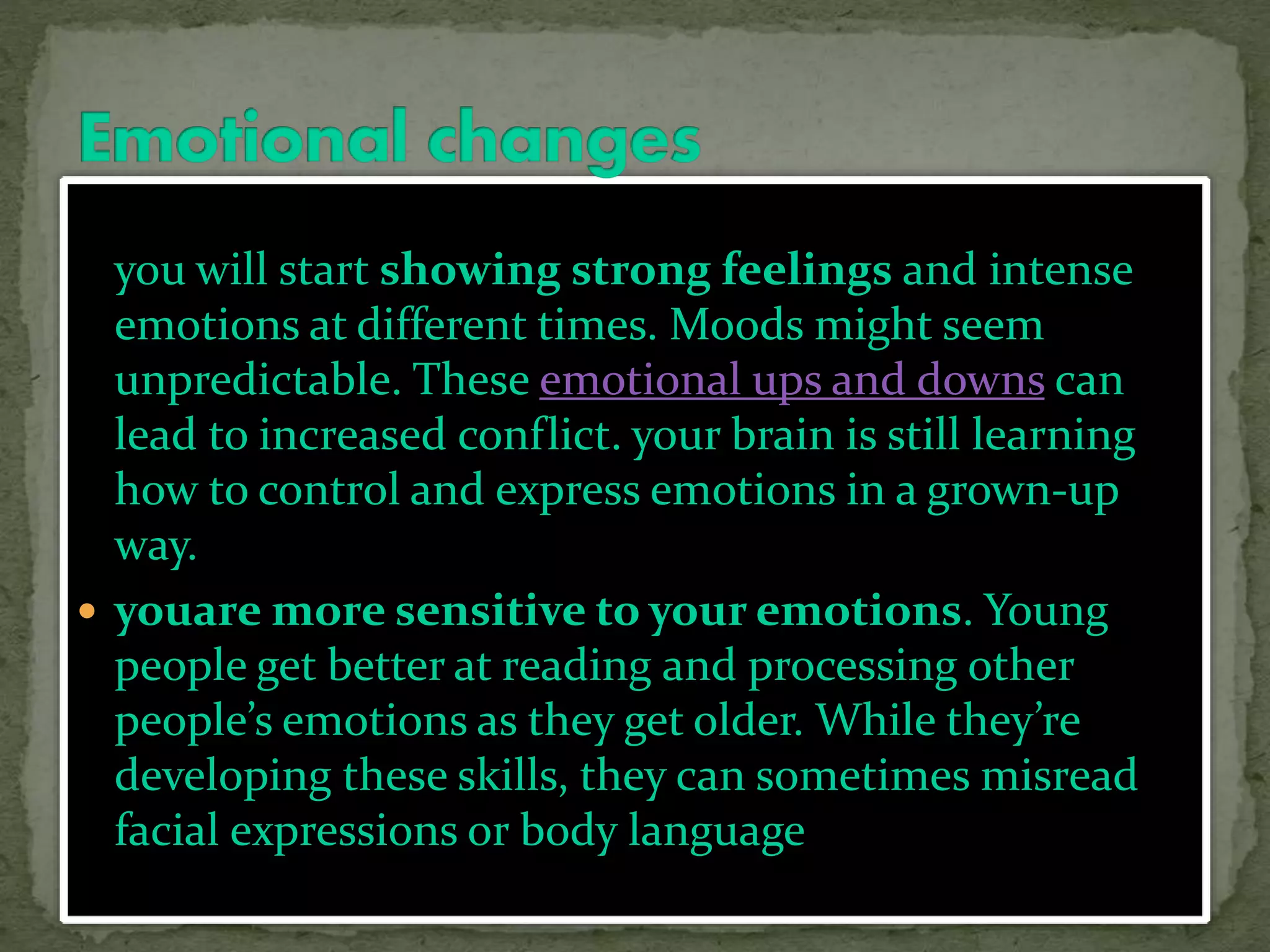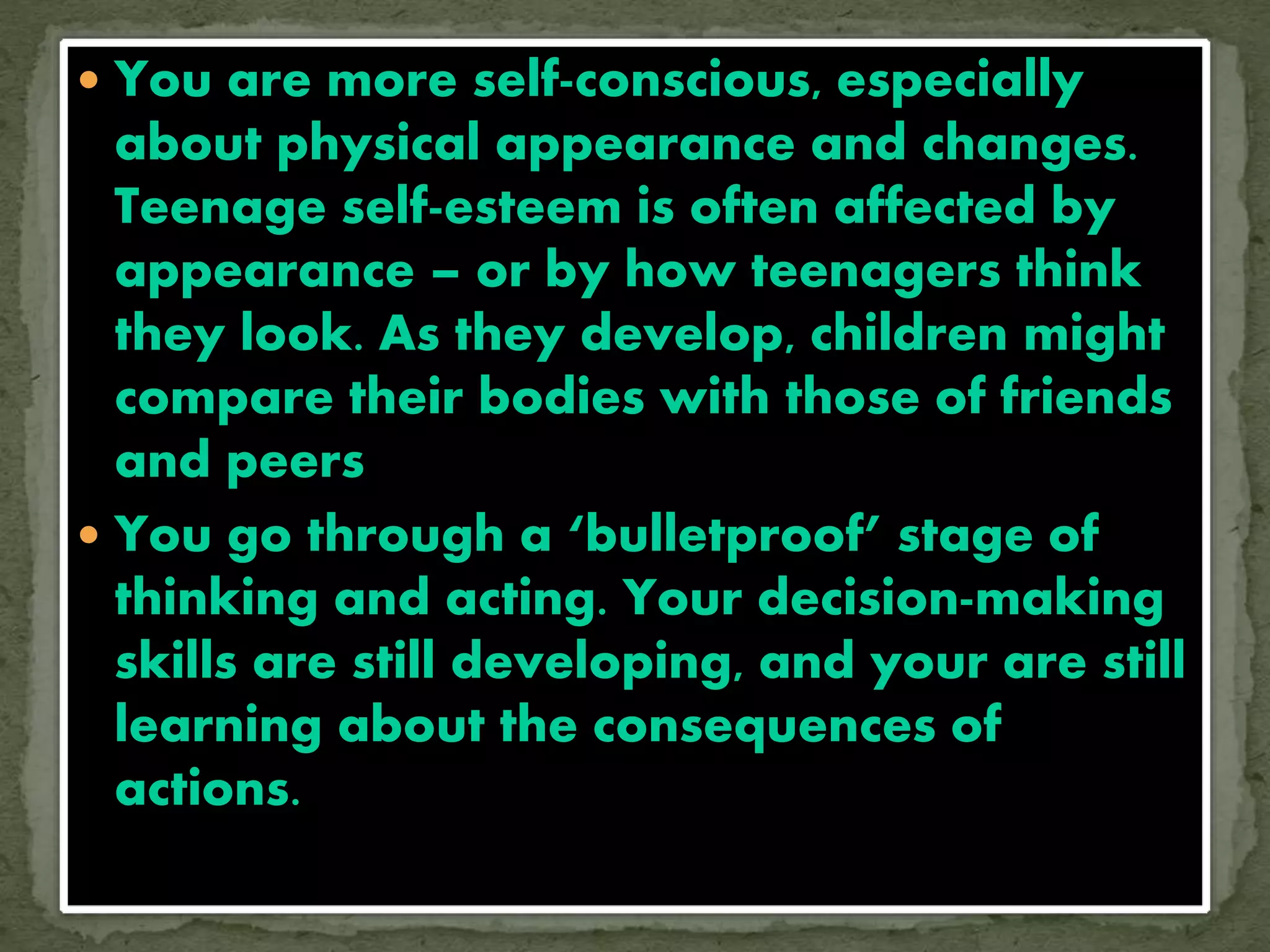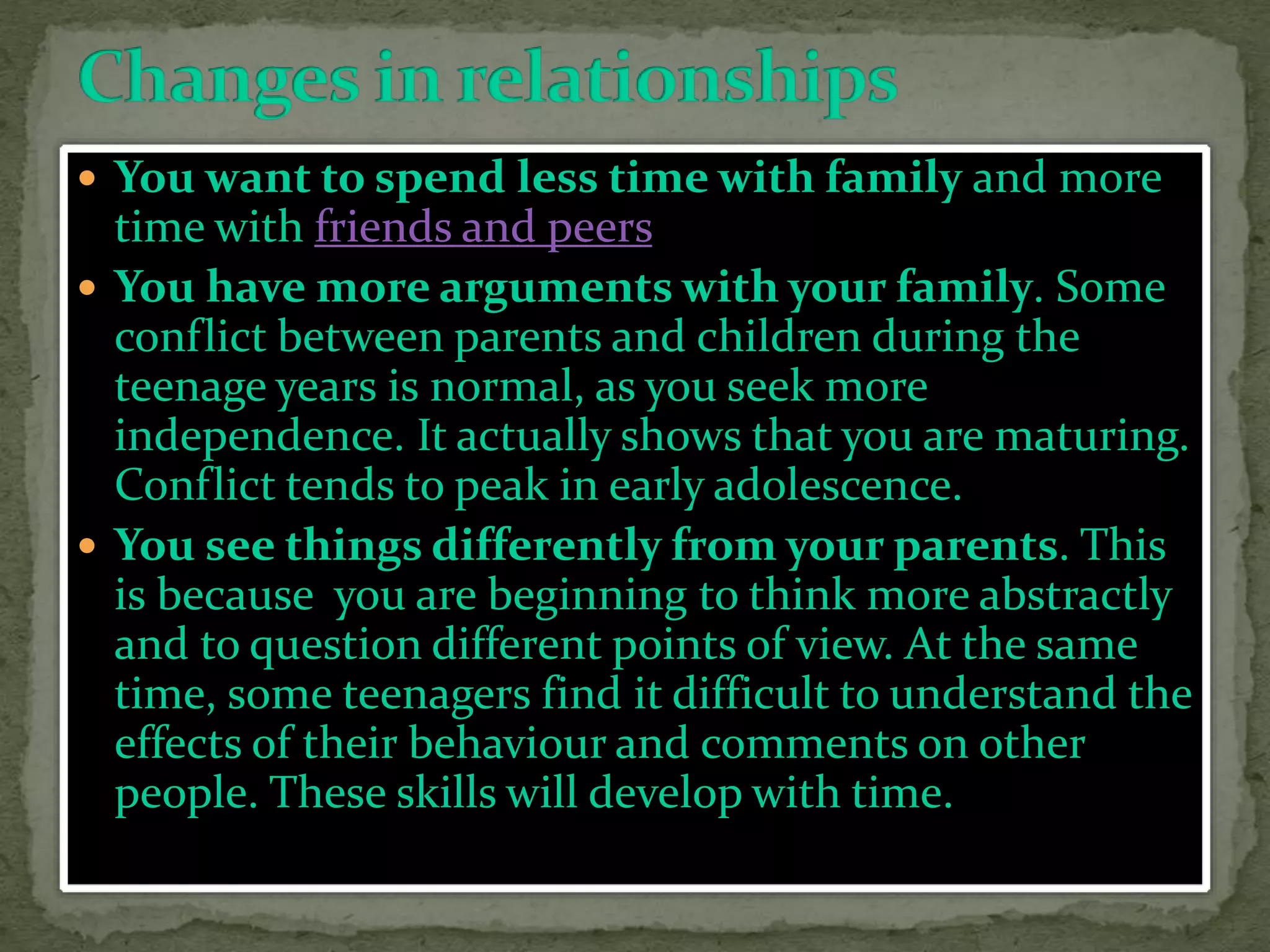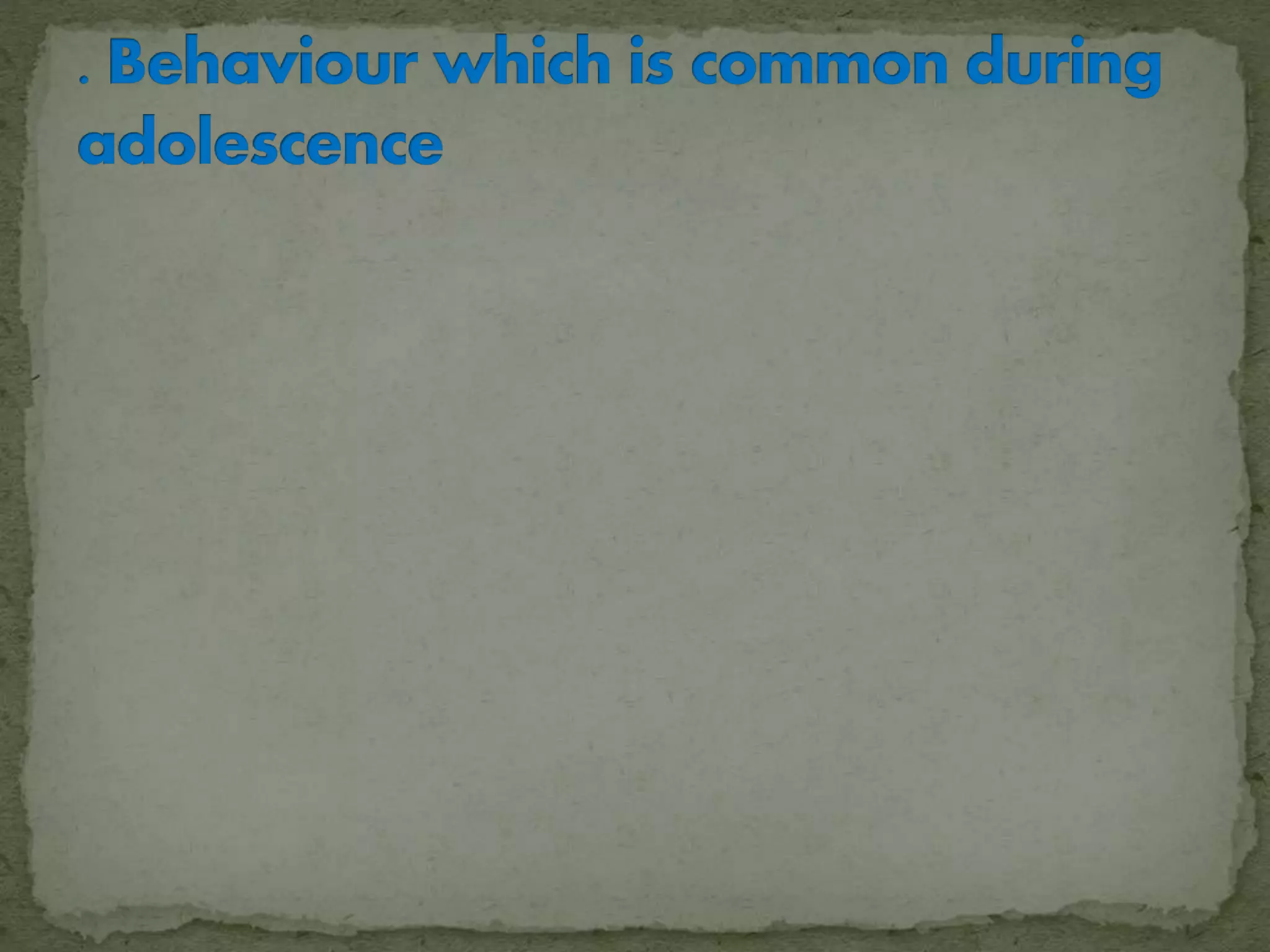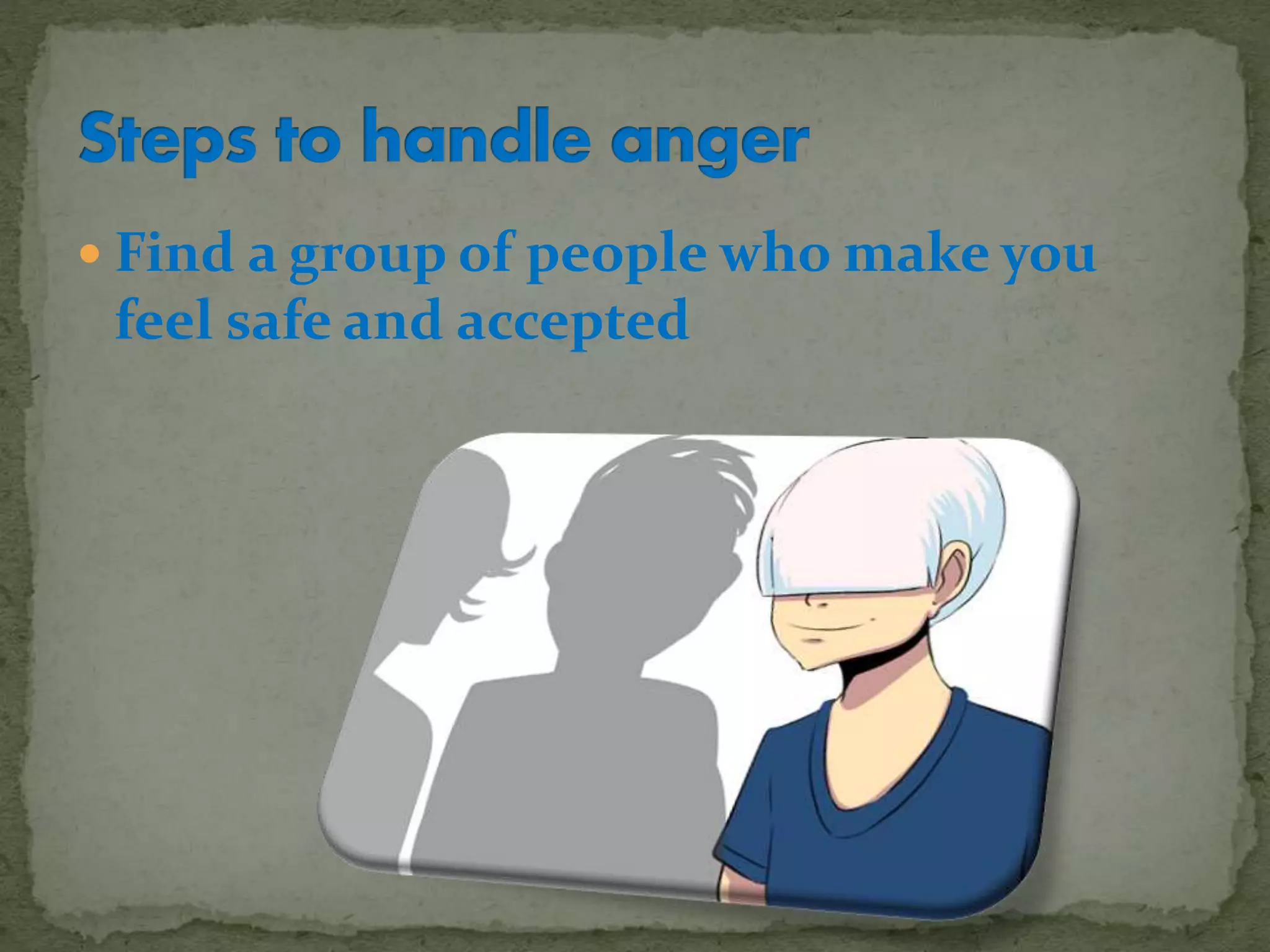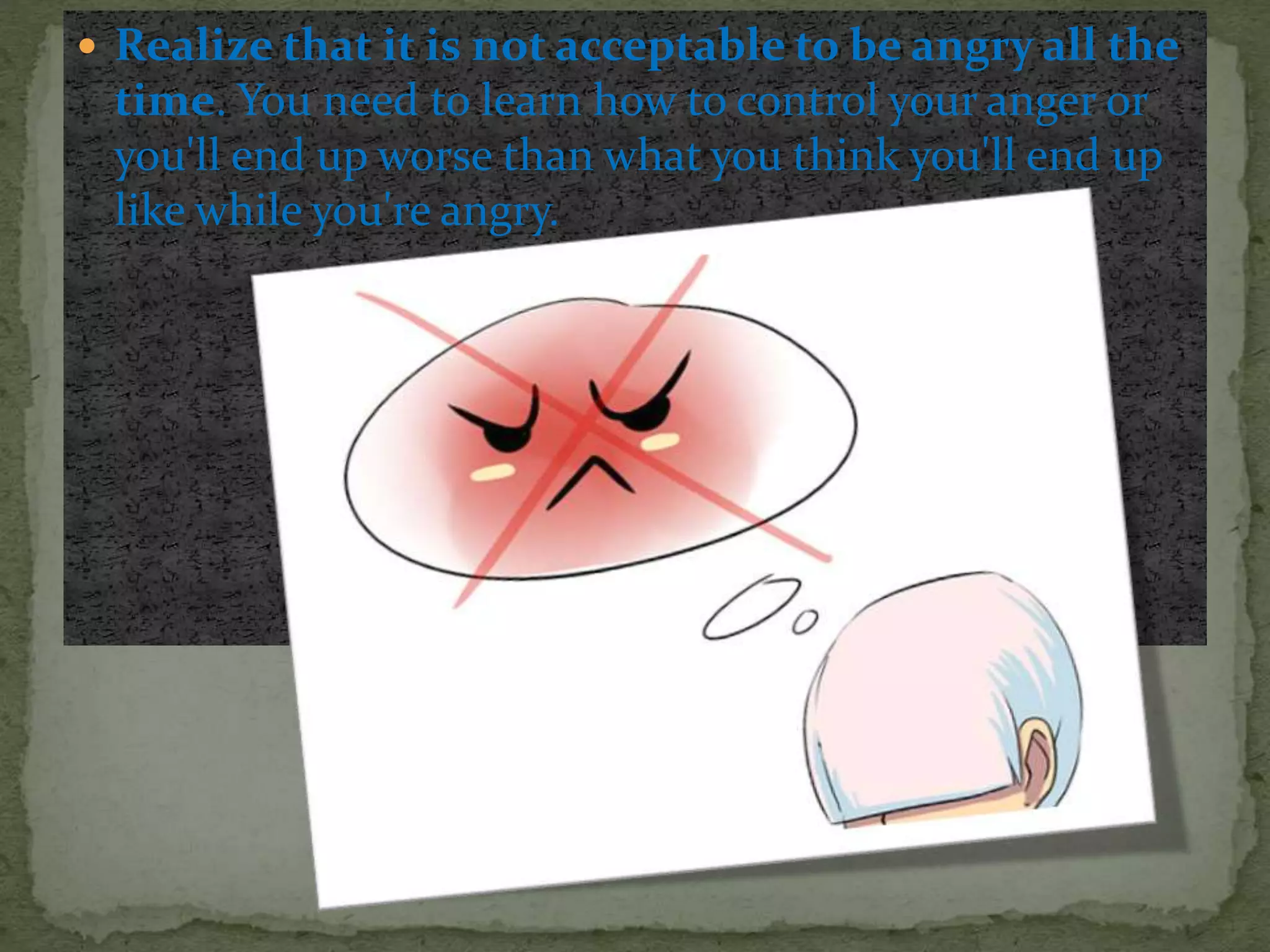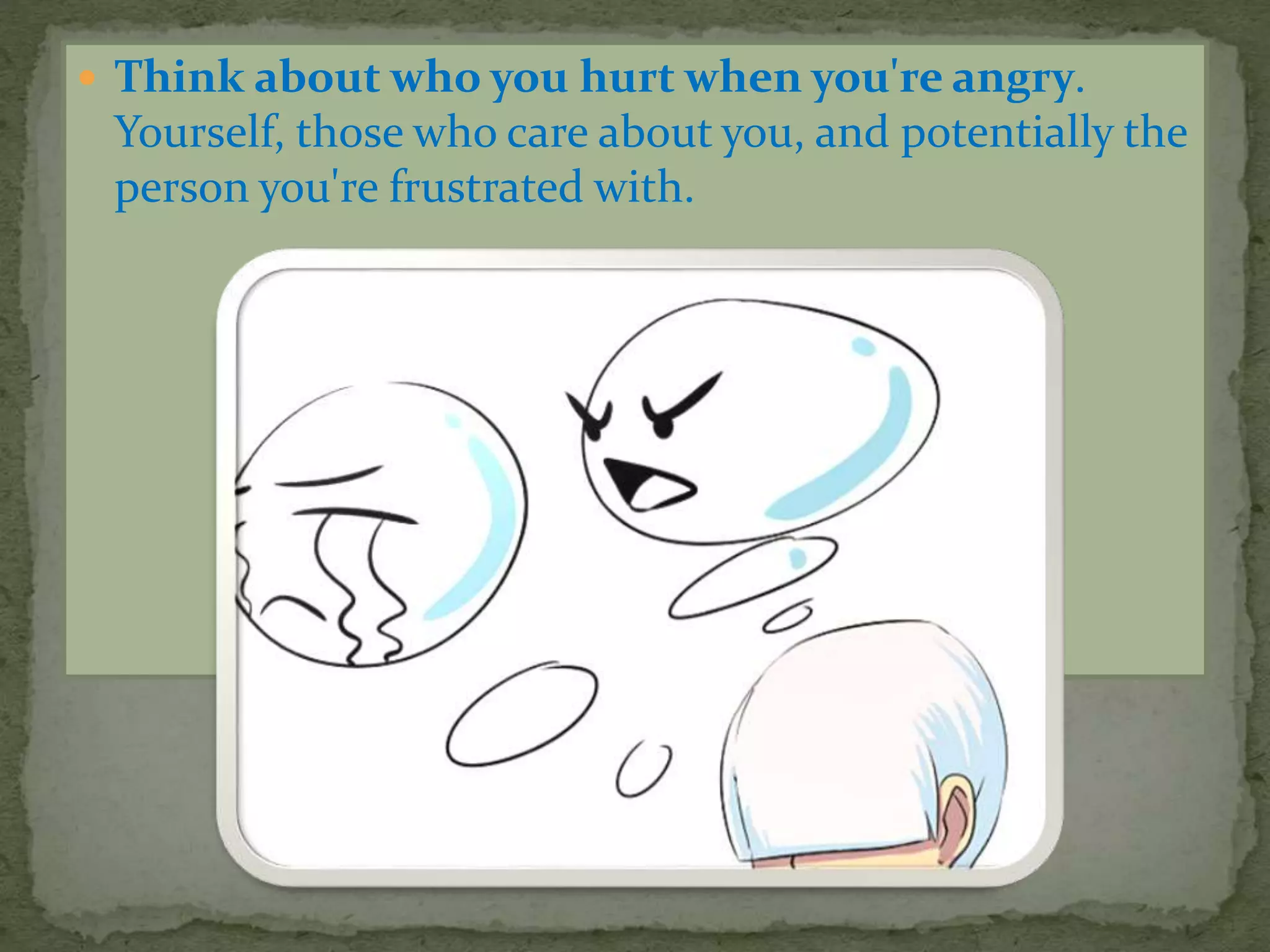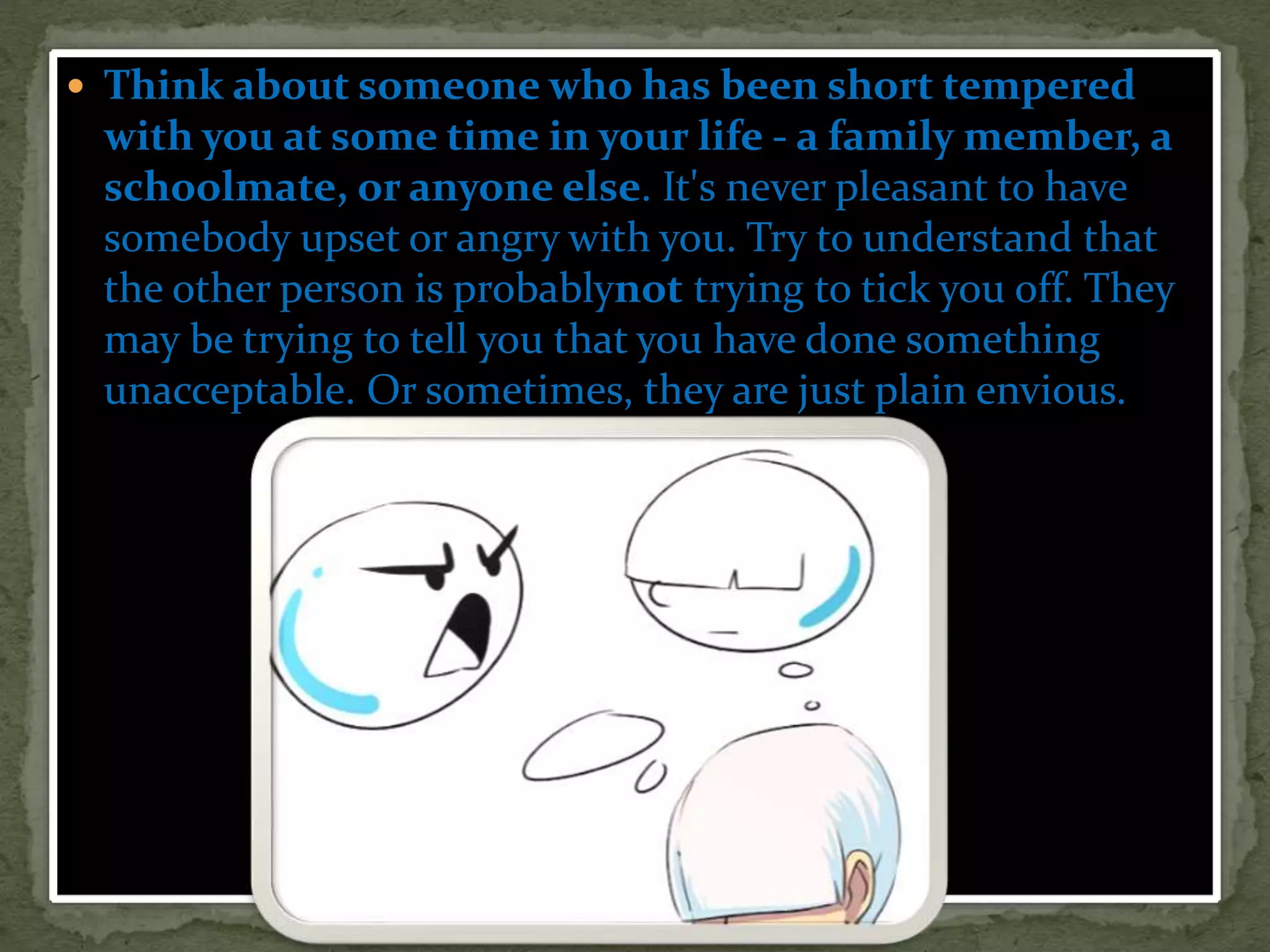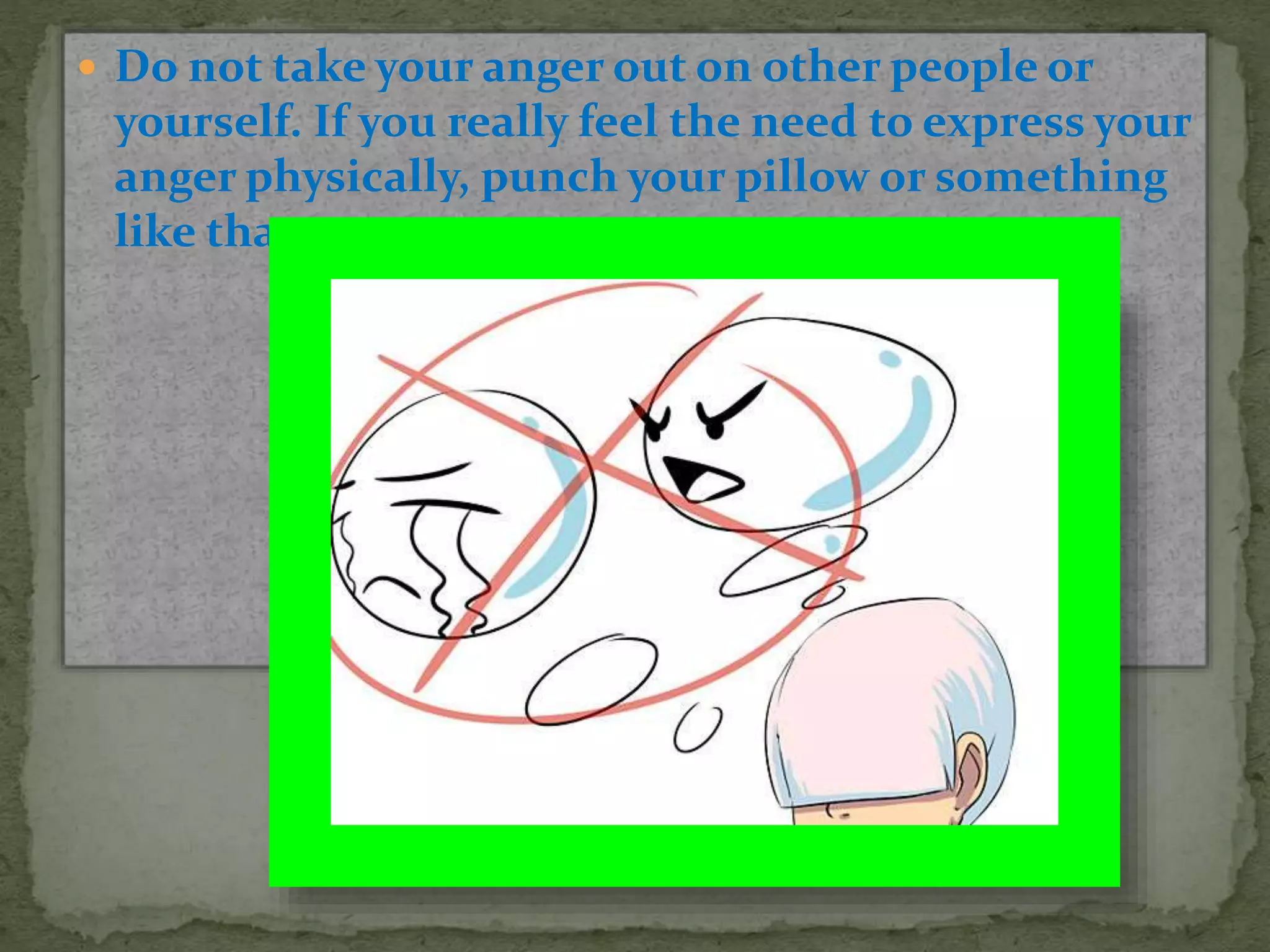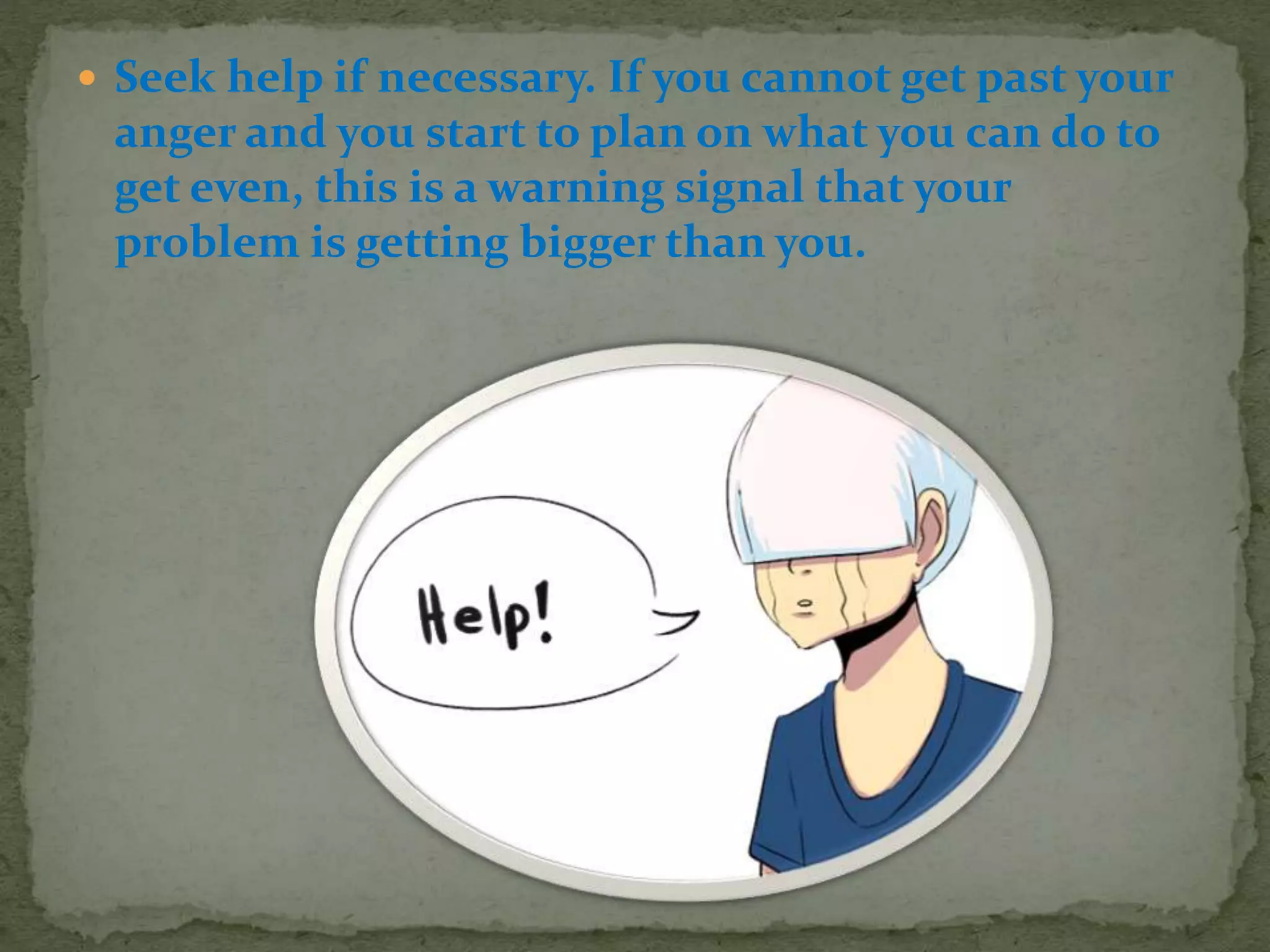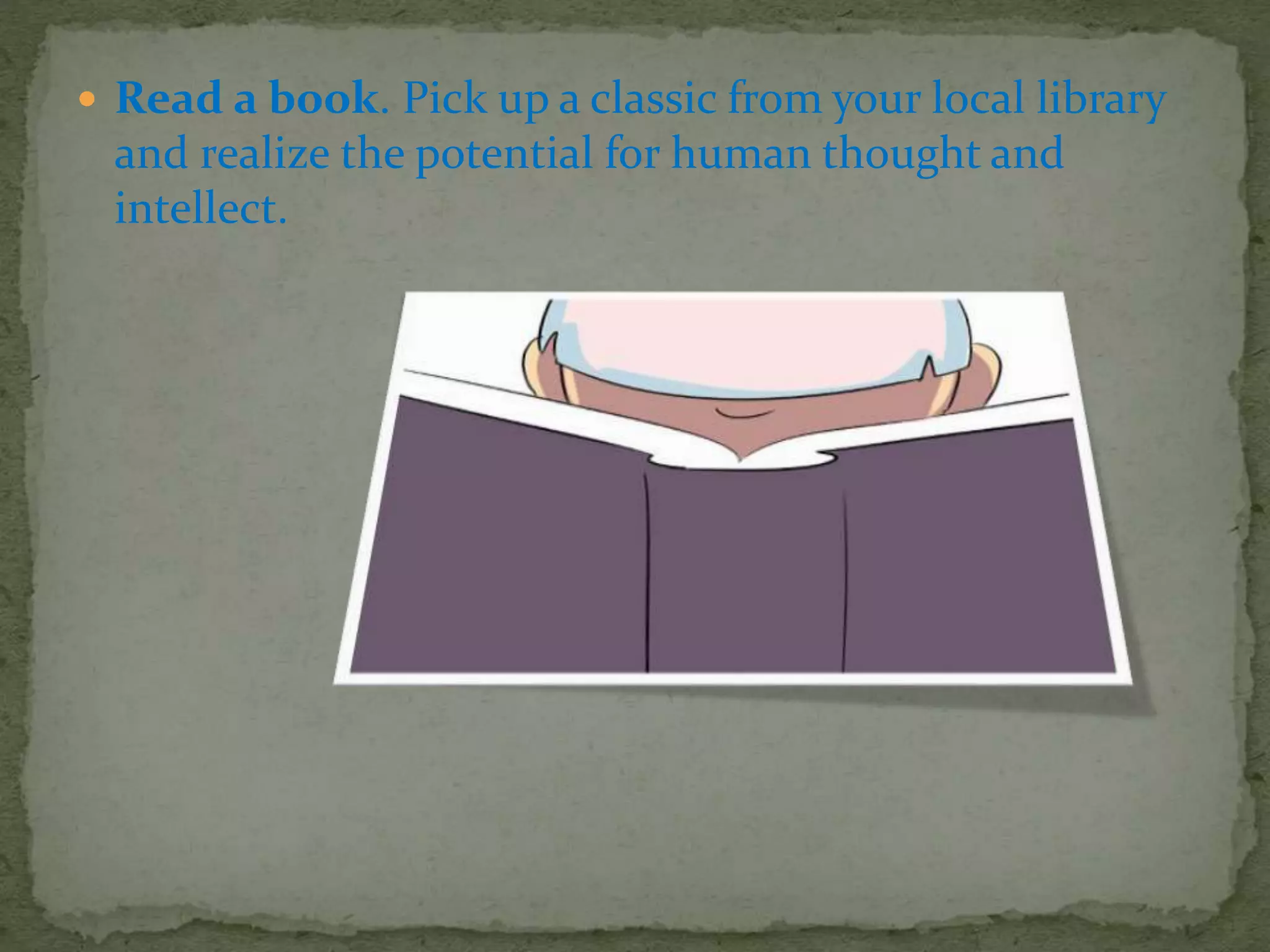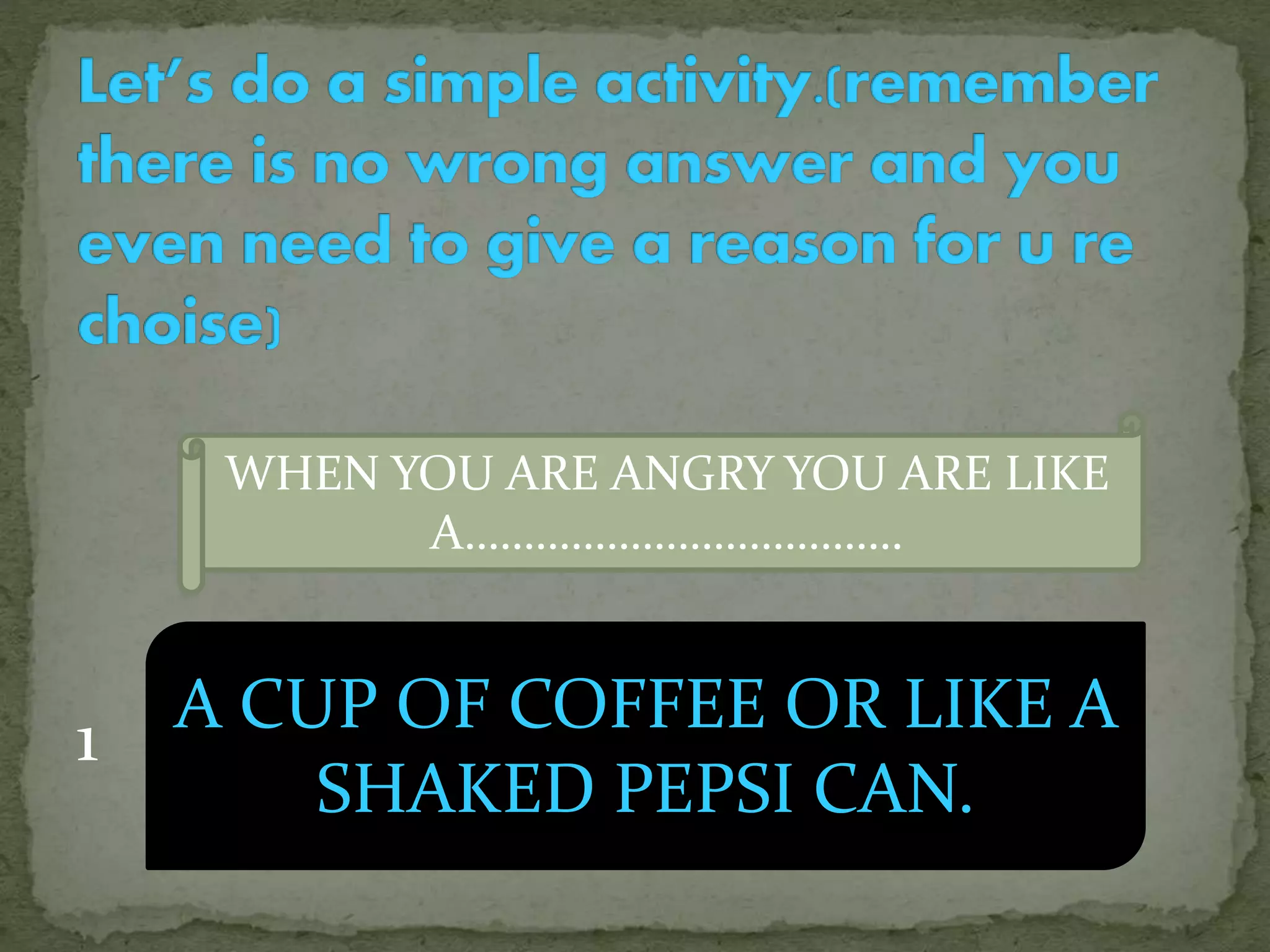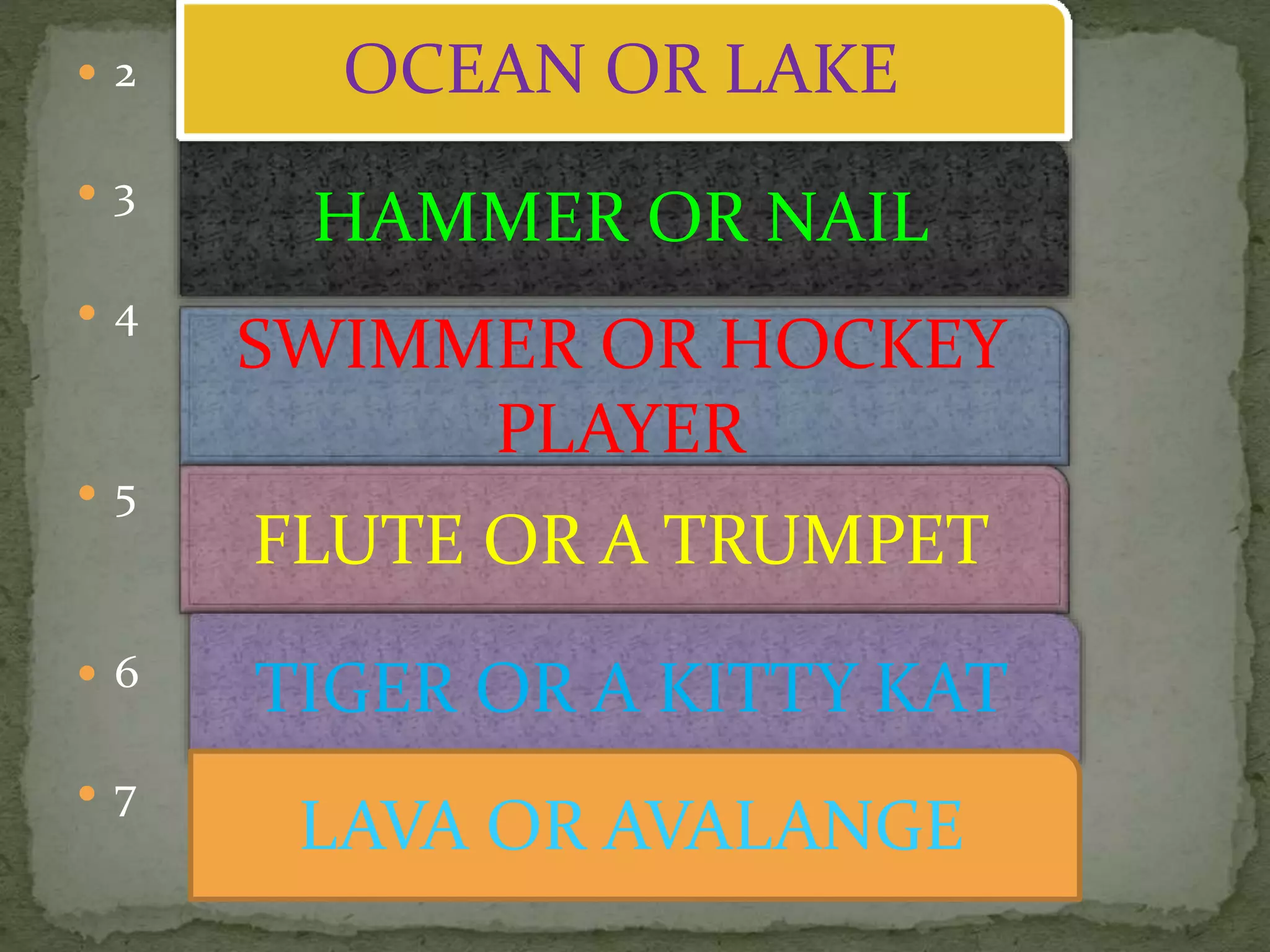Adolescence involves major physical, psychological, and social changes occurring between the ages of 10-19 as individuals transition from childhood to adulthood. Puberty is characterized by hormonal changes that trigger physical maturation. During this stage, adolescents seek independence from parents and form strong peer relationships as they develop their identity and experience new emotions. Their brains are still developing skills for emotional regulation and complex decision making. Conflicts with family are common as adolescents push boundaries. Overall development is shaped by genes, environment, culture and experiences.
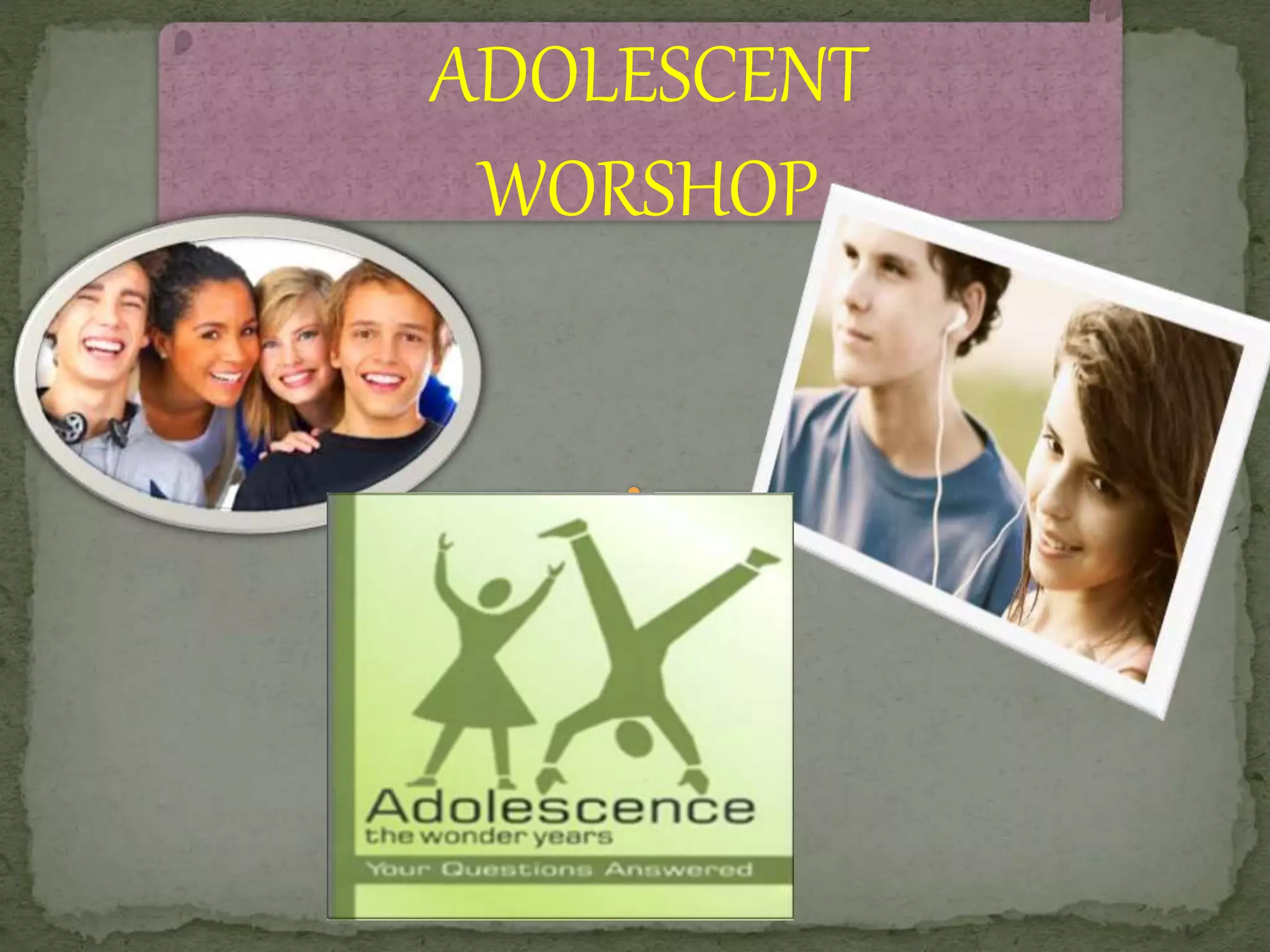
![ Adolescence (fromLatin: adolesceremeaning "togrowup") is a transitional
stage ofphysical andpsychological humandevelopment that generally occurs
during the periodfrompuberty to legal adulthood (age of majority). The
periodof adolescence is most closely associatedwiththe teenage
years,[3][4][5][6] though its physical, psychological and cultural expressions may
beginearlier and endlater.](https://image.slidesharecdn.com/adolecentworkshop-160516164948/75/Adolecent-workshop-2-2048.jpg)
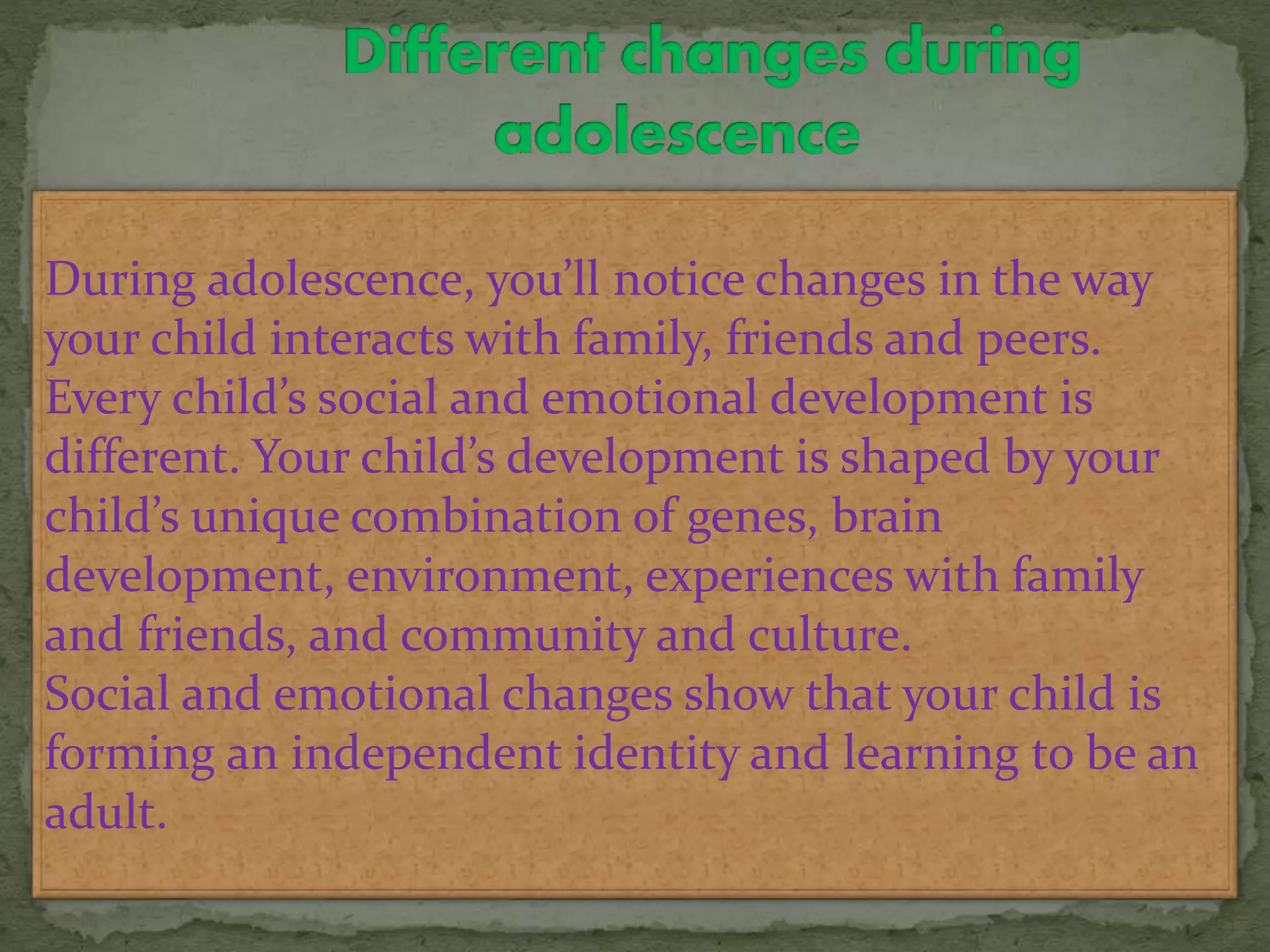
![PUBERTY
Puberty is a period of several years in which rapid physical
growth and psychological changes occur, culminating in sexual
maturity. The average onset of puberty is at 10 or 11 for girls and
age 11 or 12 for boys.[19][20][21] Every person's individual timetable
for puberty is influenced primarily by heredity, although
environmental factors, such as diet and exercise, also exert some
influence.[20][22][23] These factors can also contribute
to precocious anddelayed puberty.[10][23]
Some of the most significant parts of pubertal development
involve distinctive physiological changes in individuals' height,
weight, body composition,
and circulatory and respiratorysystems.[24] These changes are
largely influenced by hormonal activity. Hormones play an
organizational role, priming the body to behave in a certain way
once puberty begins,[25] and an activational role, referring to
changes in hormones during adolescence that trigger behavioral
and physical changes.](https://image.slidesharecdn.com/adolecentworkshop-160516164948/75/Adolecent-workshop-4-2048.jpg)
![ Puberty occurs through a long process and begins with a
surge in hormone production, which in turn causes a number
of physical changes.[20] It is the stage of life in which
a childdevelops secondary sex characteristics (for example, a
deeper voice and larger adam's apple in boys, and
development of breasts and more curved and
prominent hips in girls) as his or her hormonal balance shifts
strongly towards an adult state. This is triggered by
the pituitary gland, which secretes a surge
ofhormonal agents into the blood stream, initiating a chain
reaction. The male and female gonads are subsequently
activated, which puts them into a state of rapid growth and
development; the triggered gonads now commence the mass
production of the necessarychemicals. The testes primarily
release testosterone, and the ovaries predominantly
dispense estrogen. The production of these hormones
increases gradually until sexual maturation is met. Some
boys may develop gynecomastia due to an imbalance of sex
hormones, tissue responsiveness or obesity.](https://image.slidesharecdn.com/adolecentworkshop-160516164948/75/Adolecent-workshop-5-2048.jpg)
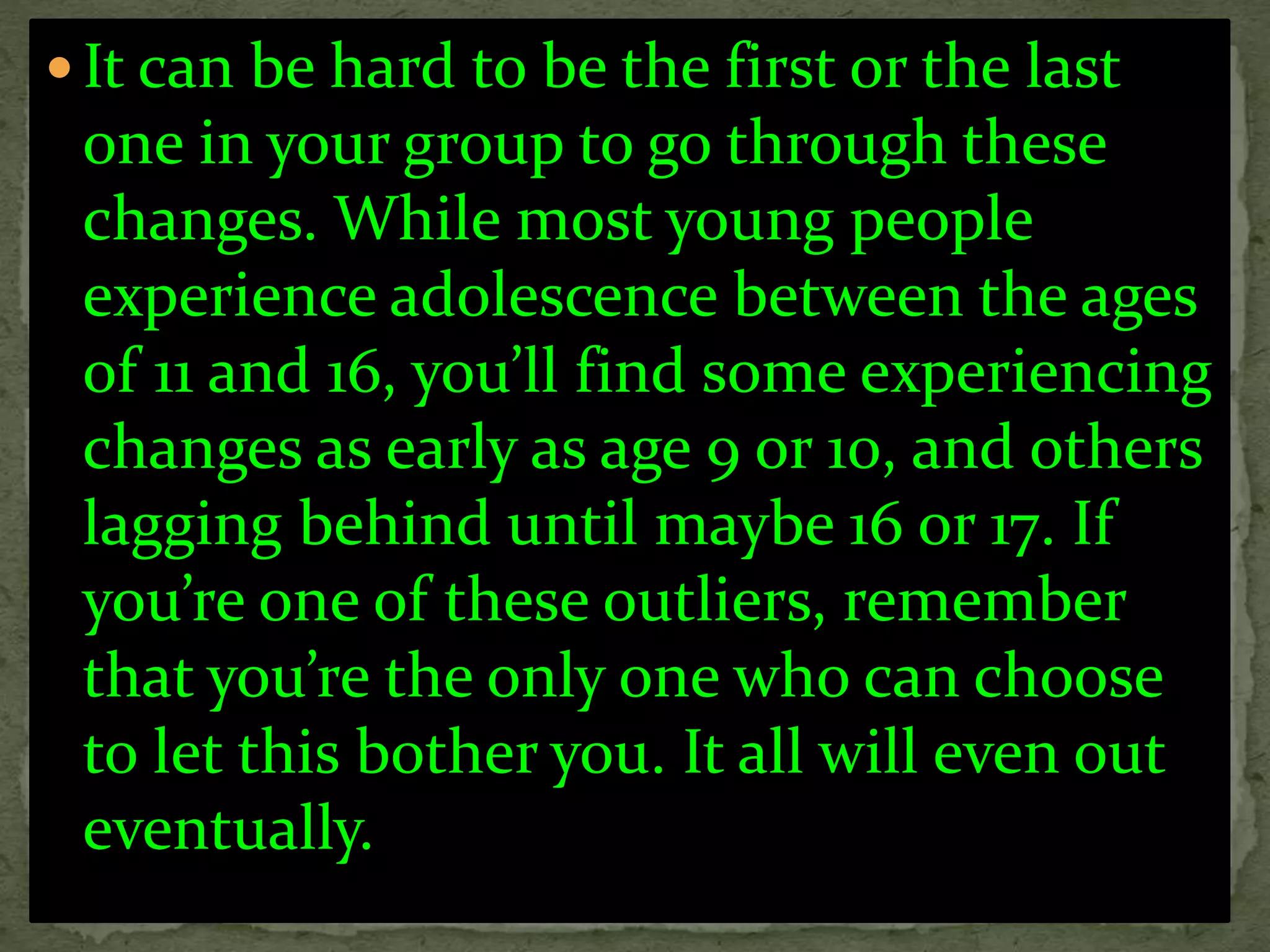
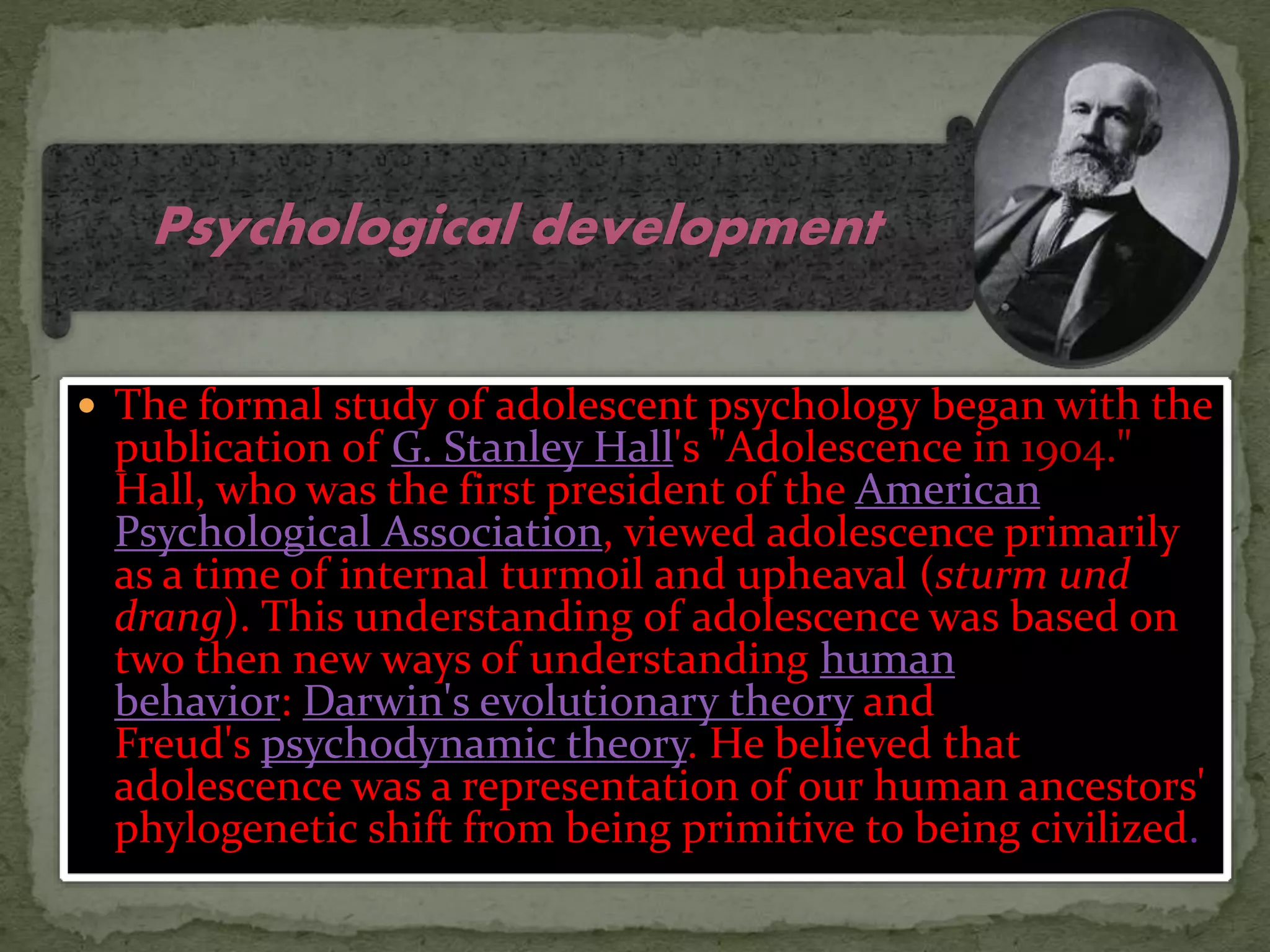
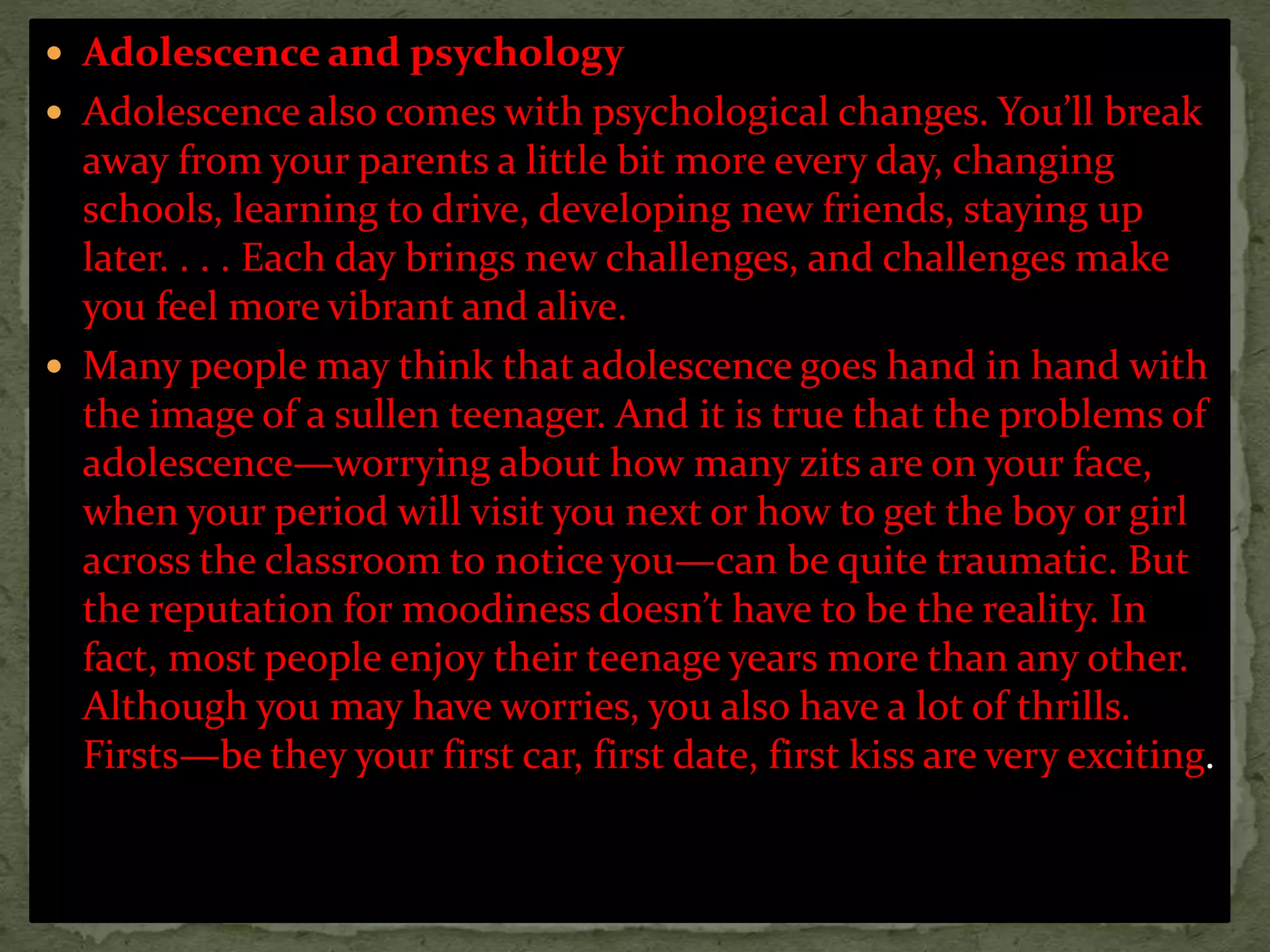
![ Peer groups are essential to social and general
development. High quality friendships may enhance
children's development regardless of the characteristics of
those friends. As children begin to gain bonds with various
people and create friendships with them, it later helps
them when they are adolescent. This sets up the framework
for adolescence and peer groups.[139] Peer groups are
especially important during adolescence, a period of
development characterized by a dramatic increase in time
spent with peers[140] and a decrease in adult supervision.](https://image.slidesharecdn.com/adolecentworkshop-160516164948/75/Adolecent-workshop-9-2048.jpg)

